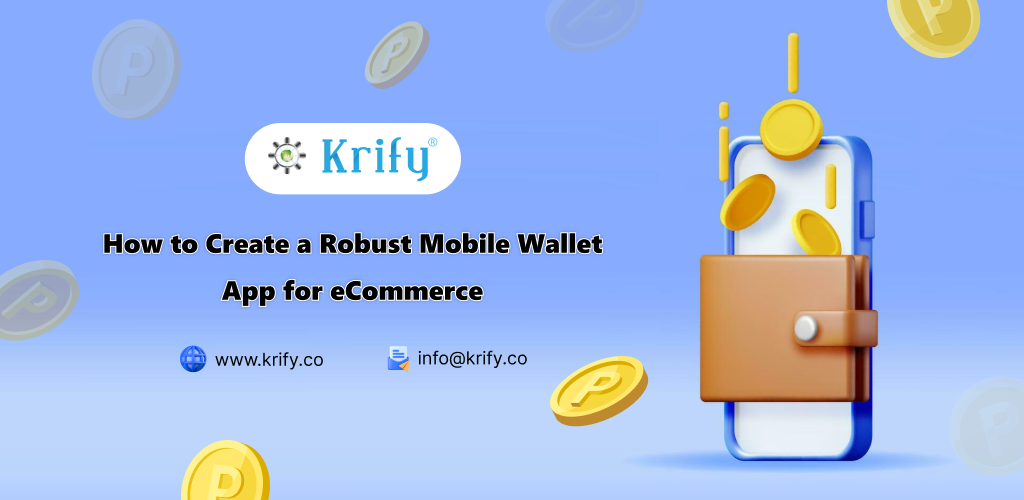In the rapidly evolving world of eCommerce, mobile wallet apps have become essential tools for facilitating seamless transactions and enhancing customer experience. Creating a robust mobile wallet app requires a careful blend of technology, user experience, and security. In this guide, we’ll explore the essential steps and best practices to develop an effective mobile wallet app for eCommerce.
1. Understand the Core Features of a Mobile Wallet
Before diving into development, it’s crucial to understand the core features that make a mobile wallet app functional and user-friendly. Here are some key features to consider:
User Registration and Profile Management
Allow users to create accounts, manage their profiles, and securely store personal information. Implementing social media sign-ins can also enhance user experience.
Payment Integration
Integrate multiple payment gateways to support various transaction methods, including credit/debit cards, bank transfers, and cryptocurrencies. Ensure the process is smooth and secure to encourage usage.
Transaction History
Provide users with a detailed transaction history to track their spending. This transparency builds trust and helps users manage their finances effectively.
Security Features
Implement robust security measures, such as two-factor authentication, biometric logins, and encryption, to protect sensitive user data and transactions.
2. Choose the Right Technology Stack
Selecting the appropriate technology stack is crucial for building a scalable and reliable mobile wallet app. Consider the following components:
Frontend Development
Choose frameworks such as Flutter or React Native for cross-platform compatibility. These frameworks allow you to build a single codebase for both iOS and Android platforms, reducing development time.
Backend Development
Node.js and Express are excellent choices for building a robust backend. They provide scalability and real-time capabilities, which are essential for a mobile wallet app. Additionally, consider using cloud services like AWS or Firebase for secure data storage and management.
Database Management
Utilize a secure and efficient database system such as MongoDB or PostgreSQL to manage user data and transaction records.
3. Focus on User Experience (UX) Design
A seamless user experience is vital for the success of any mobile wallet app. Here are some design principles to consider:
Intuitive Navigation
Design a user-friendly interface with clear navigation. Ensure that users can easily access features like payments, transaction history, and settings.
Minimalist Design
Adopt a clean and minimalist design to avoid overwhelming users. Use clear call-to-action buttons and concise text to guide users through the app.
Responsive Design
Ensure that the app is responsive and performs well on various devices and screen sizes. This adaptability is crucial for providing a consistent experience.
4. Implement Security Measures
Security should be a top priority when developing a mobile wallet app. Here are essential measures to incorporate:
Data Encryption
Use end-to-end encryption to protect user data and transactions. This ensures that sensitive information remains confidential during transmission.
Compliance with Regulations
Familiarize yourself with regulations such as PCI DSS (Payment Card Industry Data Security Standard) to ensure that your app meets industry security standards.
Regular Security Audits
Conduct regular security audits and penetration testing to identify vulnerabilities and improve your app’s security posture.
5. Testing and Quality Assurance
Thorough testing is crucial for ensuring that your mobile wallet app functions correctly and meets user expectations. Consider the following testing methods:
Functional Testing
Test all functionalities of the app to ensure that each feature works as intended. This includes payment processing, user registration, and transaction history.
Usability Testing
Gather feedback from real users to identify areas for improvement in user experience. Conduct usability tests to ensure the app is intuitive and user-friendly.
Security Testing
Perform security testing to identify vulnerabilities and ensure that sensitive user data is adequately protected.
6. Launching and Marketing Your App
Once the app is ready, it’s time to launch and promote it effectively. Here are some strategies to consider:
App Store Optimization (ASO)
Optimize your app’s listing on app stores to enhance visibility. Use relevant keywords in the app title and description, and include high-quality screenshots and demo videos.
Digital Marketing Strategies
Leverage social media, content marketing, and email campaigns to promote your mobile wallet app. Engage with potential users and highlight the app’s features and benefits.
Gather User Feedback
Encourage users to provide feedback and reviews post-launch. This input can help you identify areas for improvement and build trust among potential users.
Conclusion
Creating a robust mobile wallet app for eCommerce involves understanding user needs, leveraging the right technology stack, and prioritizing security and user experience. By following best practices and focusing on continuous improvement, you can develop an effective mobile wallet app that meets the demands of today’s digital consumers. Contact Us
Relative Blogs:
1. Tips for E-commerce Mobile App Development
2. Develop an E-commerce App like Noon
3. Why PHP for E-commerce Development



